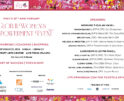
Out of the “In-Box”
Can mentoring get you out of the office long enough to boost your career?
By Jessica Handler
Make time to find and cultivate mentors. That’s how Sarah O’Brien did it. Now chief financial officer and director of operations for Kodak Dental Systems, a $500 million business, O’Brien remembers carving out time to talk with her mentor “whenever it needed to happen.” She saw her face-to-face a couple of times a year when they were on the same continent, even though they haven’t lived in the same city for more than a decade. “I am what I am today professionally because of her,” she says.
O’Brien’s mentor – to whom she now reports – is Jo Ann Campbell, chief financial and operations officer for Kodak HealthGroup, Rochester, N.Y. O’Brien’s talent, plus supportive women (“the JoAnns of my life”), help her keep an eye on the long view.
“We still have that [mentor] relationship,” O’Brien says.
Others learn through trial and error to keep a watchful eye on their careers in addition to the day-to-day grind. “How much time do we spend on ‘urgent’ versus ‘important’?” asks Sharon Wibben, vice president of merchandising and marketing systems for Wal-Mart’s Information Systems division. Wibben has worked in big jobs her entire career, from being one of the first women in field service at Xerox Corp. to heading up In-Flight Service at Delta Air Lines.
Over the years she worked “tons of hours,” she says, including Saturdays and Sundays week after week, keeping her head down, focusing on the job. Today she calls that an unhealthy way to live, professionally and personally. She warns that focusing just on the job can limit the perspective needed to make better decisions and be a better leader. One way to keep your head up? Make networking a priority, and plan for it on the calendar. “Focus on the right priorities,” Wibben says.
O’Brien knows that prioritizing friendships does contribute to overall career success. She earned her MBA from Emory’s Goizueta Business School, where she was a part of an all-female team. “Everyone thought it would be a cat fight,” she says, laughing. Instead, the productivity and communication that came from working with women ensured their success. After graduation in 2003, O’Brien couldn’t believe there was no organization to help the women keep in touch. That year, she founded Executive Women of Goizueta, an alumnae resource for sharing strategies and leadership motivation. More than 30 women from a variety of companies now serve on the board or chair committees.
KPMG also has created a way to help women get out of their “in-box.” The company founded its Women’s Advisory Board in 2003, tasked with advancing the personal and professional goals of KPMG women. Christine St. Clare, partner and advisory board member, says the board oversees women’s initiatives, including networking, mentoring, and development and advancement. Since the board’s beginning, the company has retained 23 percent more women. KPMG’s networking initiative, KNOW (KPMG’s Network of Women), is an additional career-builder for women, with chapters in 50 offices.
KC Christensen-Lang, an executive success coach and “joyologist” in Cape Neddick, Maine, advises women not to micromanage but instead step back to view the big picture. “If you’re open to opportunity, there might be an amazing person who might be a mentor, or a lesson you can learn in a different industry that makes you more savvy and unique,” she says.
Sarah O’Brien’s mentor, Jo Ann Campbell, was in General Electric’s training program when she learned not to overlook the big picture. Given half an hour of one-on-one mentoring with a senior executive, Campbell focused instead on the “in-box.” “I had been working on a presentation, and I was so focused on that,” she remembers. “[The executive] wanted to talk big picture, and I couldn’t go there.”
So what’s the takeaway? When the vice president calls on you and you are more worried about getting copies made of your PowerPoint presentation, you may be lacking the proper perspective. “It’s really all about time management,” Campbell says. She suggests you should always plan on keeping 10 percent of your time at work free, “so that when opportunities come up, you can take advantage of them.”
Three Ways to Keep Your Eye on the Big Picture When Your “In-Box” Is Full
1. Shorten the distance. Women are natural networkers, says Andrea Hershatter, associate dean at the Goizueta Business School at Emory University. As you meet people you’d like to know better professionally, send them e-mails occasionally. When an article crosses your desk that might be of interest, send it on. Make the people who are two phone calls away into “one-call” associates. Try to bring 10 people from distant relationships to mid-distance, and mid-distance to close. What’s “close”? Ongoing relationships without a specific agenda, Hershatter says.
2. See the ugly truth. No matter if you’re 20, 30 or 70, surround yourself with people who have your permission to help you see when you’re veering off course, says Sharon Wibben, vice president of merchandising and marketing systems for Wal-Mart’s Information Systems division. Focus on what’s important and what’s urgent, and get feedback from trusted colleagues and family members on the good, bad and ugly when it comes to how you manage your time and performance.
3. Open Your map. Life can hand out unexpected turns. Have a career plan, but be flexible – and recognize opportunities, says Libby Egnor, director for admissions in Emory’s Goizueta Bachelor of Business Administration program. She expresses delight about her own unexpected career path. “It’s more about your skills and how they’re transferable,” Egnor advises.
This article originally appeared in the December.January 2007 issue of PINK Magazine.
Recommended
-
Fall 2024 EventNovember 19th, 2024
-
REGISTER HERE FOR THE UPCOMING...September 19th, 2024
-
Spring Sales Are Ready To Bloo...March 1st, 2024
-
Two Months Away!August 24th, 2023
-
Pink’s Signature Spring ...May 17th, 2023















